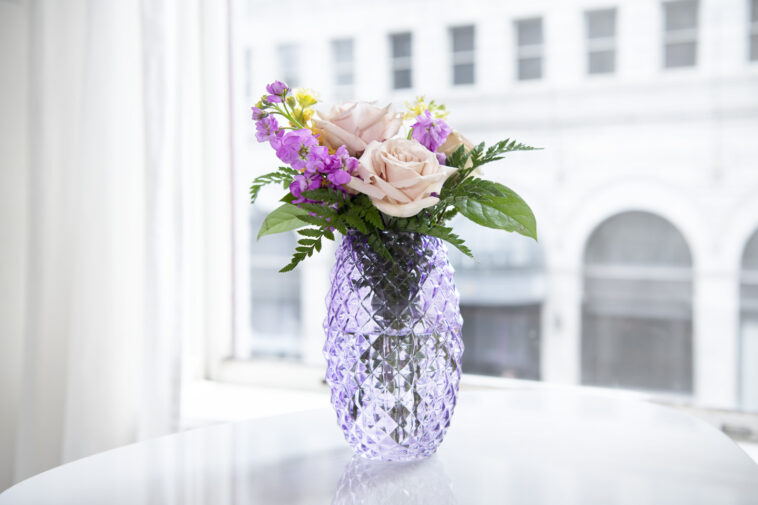Flowers are one of the most beautiful creations of nature. They have the power to light up and add life to any occasion whether it be a wedding, a birthday or even a proposal. This is why people are obsessed with flowers and cannot get enough of them and creating a demand for them for various important events.
One of the ways to make flowers look more appealing and beautiful is by making flower bouquets out of them. Not only can these bouquets act as a great celebratory gift for people’s achievements, but they also form a significant part of ceremonies like weddings and funerals. Although people might think otherwise, arranging flowers for a bouquet and making them look presentable and suitable for an occasion is an art that requires skill and practice. Listed below are some tips from top florists about how to arrange these blossoms and recreate bouquets:
1. Decide Which Arrangement Design One Would Like To Go For
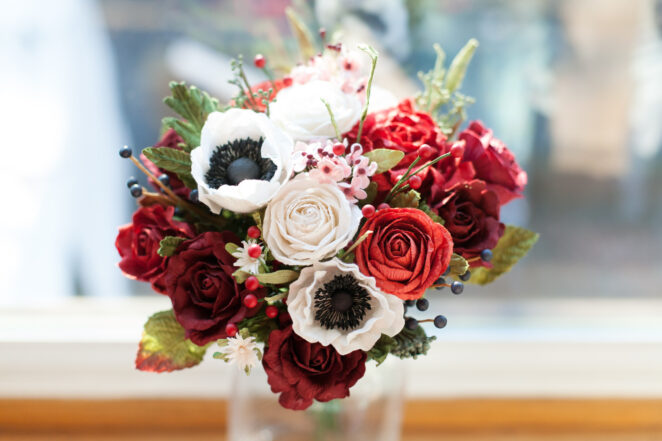
There are multiple bouquet designs that one can choose to arrange their flowers in. These can include simpler designs like those that support a monochromatic colour theme like the inclusion of different shades of a similar colour. Additionally, to add more personality and pizazz to the bouquet, one can use the colour theory and choose contrasting coloured blossoms that go together well.
Although for beginners, there exists no hard and fast rule that requires one to stick to only a given pattern of colours and petals. One can also experiment with different types of flowers that they think would go together and look beautiful in a bouquet. After all, they are blossoms and making a bouquet out of them usually turns out very pretty. Many beginners also try to incorporate the blossoms that are readily available to them to make a bouquet. It can also work as a great starting point.
2. Clean And Get One’s Flowers Ready For Arrangement
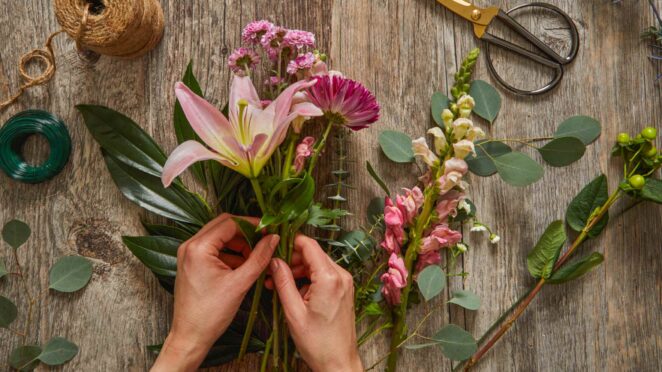
One cannot simply put fresh-cut flowers in a bouquet. It is necessary to properly cut the flowers from the plant first and clean them while keeping in mind what kind of leaves and how many of them one would like to keep in the bouquet. There are also techniques that one should follow to extend the life of the flowers so that they do not perish. One should also ensure that one is getting rid of any unwanted buds and thorns that might be on the stem. After such cleaning is done, the next step requires one to make a diagonal cut at the end of the stem and put the stem of the blossoms into a pot filled with water to keep them looking fresh for a longer time.
3. Choose The Container
After the flowers are cut and cleaned, they become ready to be arranged in a container to form a bouquet. This is why the next step to arranging the blossoms and recreating a bouquet is to choose an appropriate container that can elegantly hold all the flowers. The container can be anything from a decorative vase to even a basket. The kind of container one should use also depends on the blossoms that one is looking to arrange as different flowers can have different requirements. Some flowers might require to be constantly kept in water and hence a glass vase or a plastic bottle is better suited for them, while others can sustain without much water and may be kept in a basket.
4. Preparation Of The Container
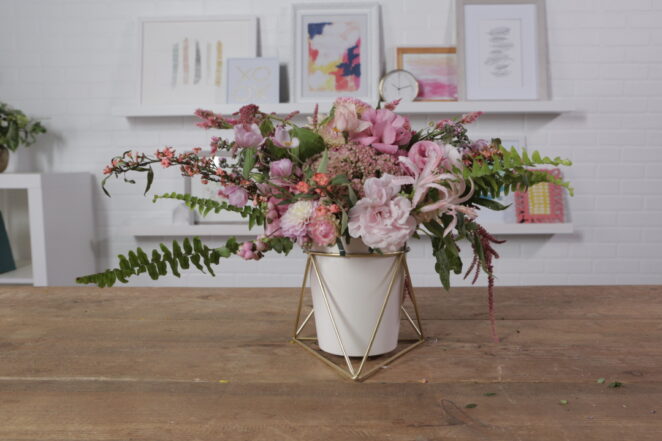
Besides choosing the type of container in which one wants to arrange one’s flowers, it is also essential to prepare the container beforehand so that the blossoms can be arranged nicely while also staying fresh. Different methods are used to prepare a vase or a basket so that the blossoms can be arranged in them without losing their structure or moving from their place. These include floral tapes which can be used to form a grid to hold the flowers in place and different kinds of sturdy sponges and metal wires which perform the same function.
5. Arrange The Other Elements Of The Bouquet
Before directly placing the centre-piece blossoms into the bouquet or a flower arrangement, it is advised to start with the base requirements of the same. This can include different types of leaves. They are usually used to add some greenery to the final bouquet while also helping in setting up a structure for the same. They can help to structure the whole bouquet using strategic placement and placing them on the outer corners of the bouquet to determine its shape. Other blossoms can then be placed within this border so that the bouquet stays in a particular shape.
6. Arrange The Flowers
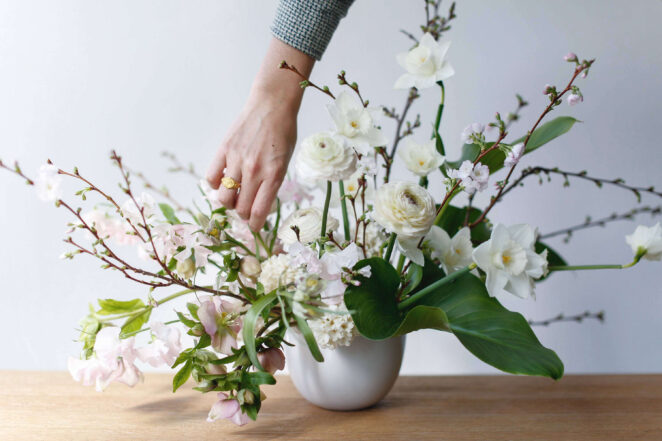
The final step to arranging flowers in a bouquet is to arrange them. The best way to do it is to focus on the main ‘centre-piece’ blossoms first as they can determine the whole look of the bouquet. This is when the final picture of the arrangement should be kept in mind. After adding the focal or main blossoms into the arrangement and placing them in the desired places, one should go for the secondary blossoms that one is working with. These secondary blossoms are also known as filler flowers and are usually used to fill in the gaps between the main blossoms and the leaves in the border.
Conclusion
Making a bouquet and flower arrangement can be a rewarding experience, especially when it is done with the appropriate tools and knowledge about the same. Using the above step-by-step tips from top florists can enrich the experience of making bouquets systematically. It will allow one to create clean and beautiful-looking flower arrangements for various occasions while also ensuring that they last for an appropriate time and do not perish easily under difficult temperatures and environments and retain their structure for a long time.

